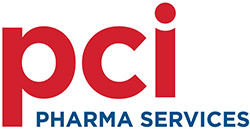The self-administered injectable drug-device combination (DDC) market finds itself in the early stages of unprecedented therapeutic advancements.
And putting all the easy pharma buzzwords aside — revolutionary, breakthrough, dedicated expertise, etc. — the overarching reason for this paradigm shift boils down to one word: necessity.
This new dawn for DDCs is addressing healthcare’s horizon. And although it certainly might be revolutionary, first and foremost it’s preparatory. In the UK, a University College London study of adults born in 1970 — middle-aged Gen Xers — found that more than a third had at least two chronic conditions.1
In the US, the number of people older than 50 with at least one chronic disease is expected to nearly double during the next three decades, increasing from 71.5 million in 2020 to 142.7 million by 2050.2
Rarely is the economic principle of supply and demand so predictable.
With the need for streamlined therapeutic solutions all but guaranteed to increase for the foreseeable future, it’s little wonder why those designing and supplying DDCs are responding with improvements in usability, convenience and safety.
Fortunately, these advancements have guideposts as established self-administration treatments for prevalent conditions (such as diabetes) inform therapies for more varied illnesses with smaller patient populations.
The current and projected market figures back this up … and then some.

In 2023, the global DDC products market was valued at approximately $138 billion (£101 billion); by 2030, the sector is expected to nearly double to $252 billion (£185 billion), reflecting a 9.0% compound annual growth rate (CAGR).³
Considering this, self-administered injectable DDCs have emerged as a keystone technology by upgrading drug delivery, enhancing patient compliance and optimising outcomes.
Unsurprisingly, part of this effort involves incorporating DDCs into medication regimens right from the outset: during clinical trials.
Of course, leveraging self-administered parenteral applications in clinical studies requires a strategic approach to address various design, regulatory compliance, user-centricity and scalability issues, all of which are best navigated by engaging with CDMO partners with experience in both conventional clinical trials and those involving injectables and other DDCs.
Traditionally, single- or multi-use vials have been the primary container of choice for intravenous drug administration during preclinical and early phase clinical trials.
These vials offer significant flexibility in terms of fill volume and dosage, aligning with the primary objectives of early trials: establishing proof of concept, ensuring safety and determining tolerated doses.
However, with growing emphasis on patient-centricity and the increasing prevalence of self-administration devices to treat chronic diseases, the industry is shifting toward predosed, less skill-dependent subcutaneous dosage forms.
In this environment, prefilled syringes, passive needle safety devices (NSDs) and autoinjector delivery systems are becoming integral aspects of product portfolios.

Promisingly, several prominent biopharmaceutical companies are actively investing in research and development to enhance device functionality, ensure compatibility with a wide range of drug molecules and incorporate these devices into clinical trials earlier in the development process.
For example, companies are increasingly bringing prefilled syringes into Phase II trials and autoinjectors into Phase III, providing commercial flexibility to launch with both prefilled syringes (with or without NSDs) and autoinjectors, depending on regional and other preferences.
Of the myriad benefits of utilising DDCs in clinical trials, improved patient compliance and retention may be the most substantial.
Self-administration simultaneously reduces dependency on healthcare professionals and empowers patients to take matters into their own hands.
Such convenience can increase adherence to trial protocols, particularly in long-term studies when frequent clinic visits might otherwise lead to elevated dropout rates.
Dosage standardisation is another significant plus. Prefilled injectables deliver precise and consistent doses, thereby minimising human error.
Such commonality is crucial to ensure accurate pharmacokinetic and pharmacodynamic data.
Finally, DDCs uplift the overall clinical trial experience for both patients and trial sponsors. For the former, user-friendly designs, minimal pain and reduced injection-related anxiety contribute to more positive experiences, fostering greater engagement throughout the trial.
For sponsors, injectable DDCs provide real-world insights by mimicking post-market applications. Whereas conventional clinical trials offer a controlled environment for the drug, clinical trials incorporating DDCs do so for both the drug and its usage scenarios.
These benefits more than justify the meticulous, multifaceted planning and execution involved in bringing drugs and their delivery devices together from the very start of the investigational and manufacturing journey.

